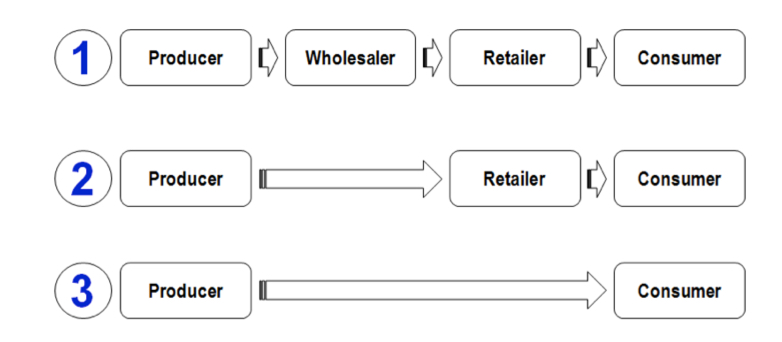Menu:
1. Definition
Distribution channel, also known as marketing channel, is the process of passing products or services from the manufacturer to the end consumer. It can be as straightforward as the interaction between manufacturers and buyers, or with intermediaries such as wholesalers, retailers, consultants, etc.

Manufacturer is also known as producer, supplier.
The retailer is the seller and lastly, the buyer is the consumer.
2. Functions
- Create a fluid transaction between the producer and the customer: distribution channels take care of order requirements (time, location and quantity) to make products available for purchase.
- Assist in inventory management: products are assembled, packaged and delivered by marketing channels. Products that have not been shipped will be stored in warehouses.
- Push the growth of the manufacturer: when the provider does not have enough resources for direct marketing, middlemen can help them sell their items. The more distribution channels there are, the higher the prices are marked up, bringing more profit to both the producer and the intermediaries.
- Provide market information: Companies use distribution channels as a means to learn about customer behavior, research on third-parties and collecting selling data for planning a marketing strategy.
- Break the bulk: products are easily bought in large quantities by wholesalers and then the bulk are divided into smaller loads and sold to customers.
3. Variations
There are 3 main types of distribution channel:
- Direct channel: a zero-level channel only includes the provider and the end consumer in the exchange. Products are offered through the producer’s website or door-to-door and will go straight from the seller to the buyer when they are purchased.
- Indirect channel: when the product travels from the manufacturer to one or more intermediaries before arriving at the consumer’s door, the route is called an indirect channel. There are one-level channel, two-level channel, three-level channel and so on in this category, with the level increasing corresponding to the number of middlemen.
- Hybrid distribution channel: this type of channel is for companies who have complex customer segmentation. They will have 2 or more distribution channels (usually one direct and one indirect channel), each targeting a separate segment of users based on their characteristics.





